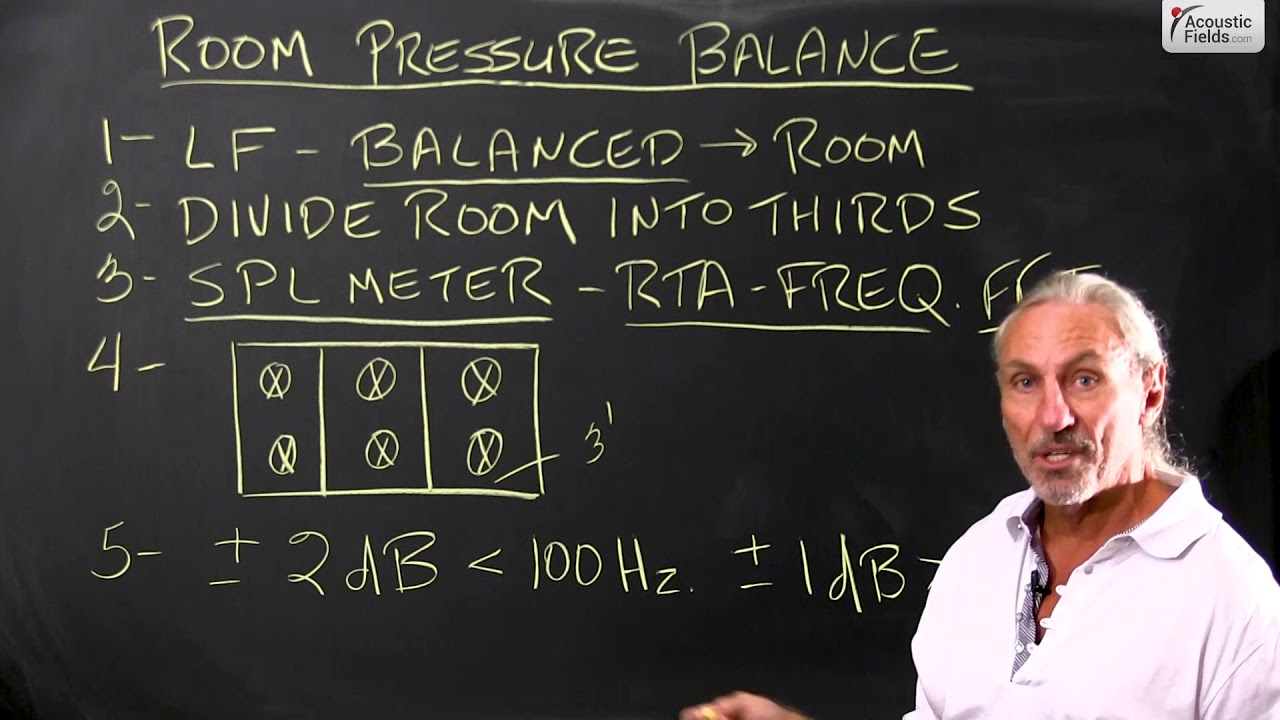Let’s talk about room pressure balance. A lot of you when we talk on the phone during the week and emails that you send me, we’re always discussing areas of high pressure, high-low frequency pressure in your room.
So I kind of come up with this idea of helping you measure that. It’s not real technical way but it’ll give you a way to get a feel for what’s going on in your room and I think the more time you spend in the room, the more time you walk around the room, obviously the more time you measure different positions in your room, the more comfortable you get with it, the more knowledgeable you become about it and then you can assign the appropriate treatment.
So always in music the key word we have to use is balance. Everything inside of a room has to be balanced. If you think about the chain that we’re listening to, when the mix engineer records, he is about balance. When the mastering engineer gets the mix, he’s about spectral balance. So when we release the energy into the room, we should also be about balance. We should be able to hear everything equally, not a huge amount of energy below a 100 Hertz and maybe less above. So we want to kind of have a good balance in there.
So here’s a little simple test that we can use to get you more familiar with the room. Just get a standard sound pressure level meter, there’s a tons of them available. And then get an RTA that has an FFT function on it so you can look at the individual frequencies and there’s plenty available in the app store, you can get them.
So let’s divide our room into thirds and take just 6 measurements. Stay away from the boundary surfaces about 3 feet and do some measurements. Play a song, play a sign wave, a steady tone at a certain frequency if you want to, stay below a 100 cycles and take some measurements around your room and then plot. Maybe here, it’s going to be 85 dB SPL, okay? Maybe over here where our speakers are, maybe it’s going to be 90 SPL, okay?
Just do a little investigative work. Do a little bit of measurement in your room and try to see where the hot spots are in the room, okay? The hot spots are areas of high pressure that we don’t want. If the front end of your room is real high pressure and the back is not so high, that’s an uneven balance. So you’re hearing less, because it’s being smothered here, than you would be at the listening position here.
So let’s just do some measurements, let’s get used to our room a little bit, try to figure out how it’s behaving. And then if we see a big difference in SPL readings at below a 100 cycles, then we can assign a treatment to that particular part, okay?
So what should we shoot for? Just a rough idea, plus or minus 2 dB less than a 100 cycles throughout the room and plus or minus 1 dB above a 100 cycles throughout the room. That should be a goal that you shoot for. Our Sacred Ground studios in California is actually – well, we won’t do that – but actually it’s less than 1 dB across the board from 30 cycles all the way to 20,000. But that’s a special room, that’s my personal room and I’ve spent a lot of time getting it that way and a lot of money.
But as a general rule, we want balance throughout the room. So use this simple procedure and see what your pressure levels are in the room and then call me and tell me what you have and then I can tell you how much square footage of treatments you’ll need in that area to balance things out.
—
This is an unedited transcript from our video series from Acoustic Fields. There will be some errors in grammar and sentence structure that occur during this translation process.
For complete understanding and comprehension, please view the video which is included in this text. For any additional information regarding this topic or others relating to room acoustics, please contact us directly at:
P: 520 – 392 – 9486








The discussion on ductwork noise transmission from Acoustic Fields highlights crucial aspects of HVAC system acoustics. The movement of air…
Great build plans. thank you Denis
You must use absorption. Never place a chair against a wall.
A friend and I built several diffusors using these plans and they turned out absolutely beautiful. Very good instructions and…